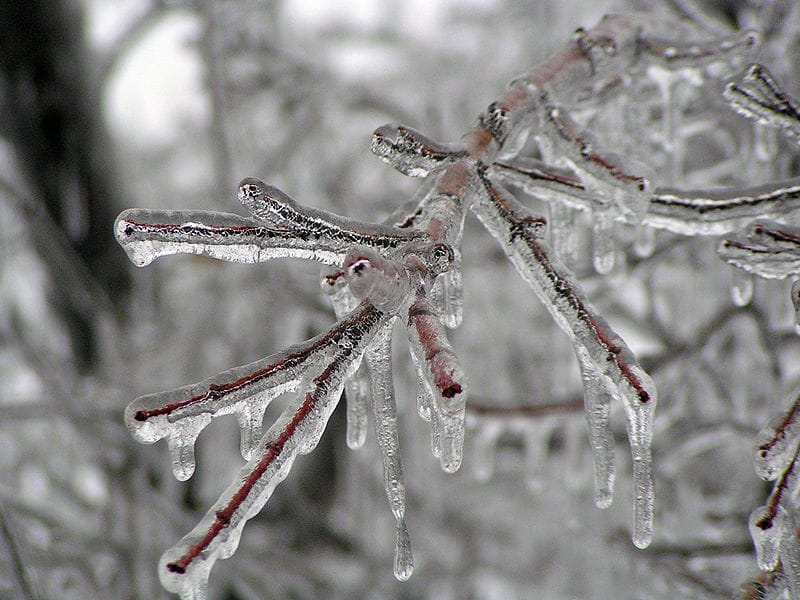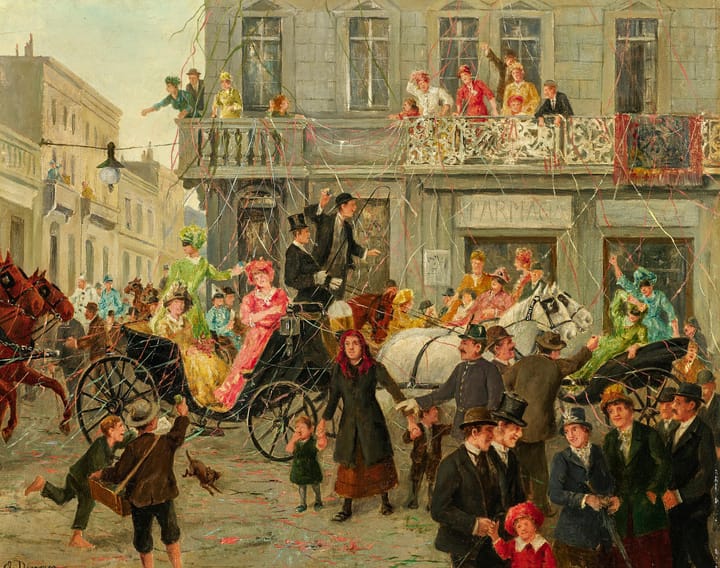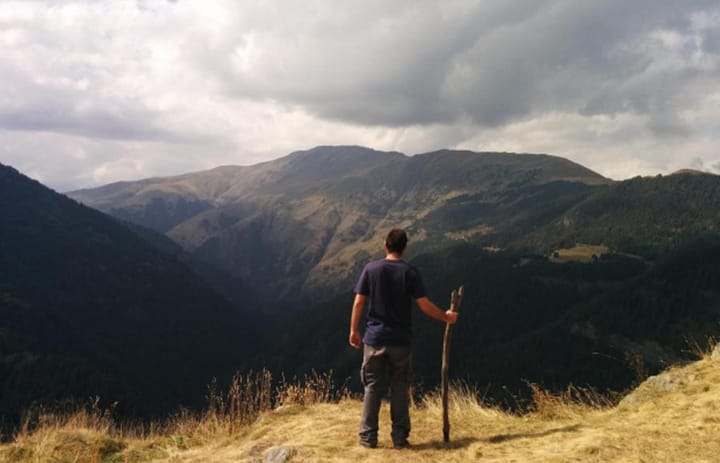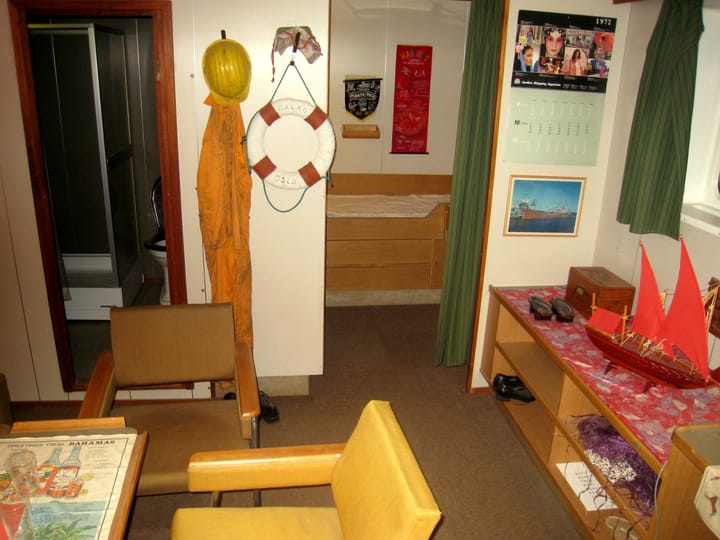Freezing in Montreal: The Great Ice Storm of 1998.
How 8 days of ice reduced some of Canada's largest cities to apocalyptic ghost towns out of a science fiction movie.

Twenty-seven years ago today, on January 4, 1998, a curious anomaly began to develop in the upper atmosphere over eastern Canada. A large mass of warm air drifting up from the Gulf of Mexico and a mass of cold air over Labrador collided. This usually doesn’t happen because circulation patterns cause these sorts of collisions to move further east, over the Atlantic Ocean (such a thing happened eight years earlier, in the storm that sank the famous fishing boat Andrea Gail, of The Perfect Storm fame). This time, it didn’t. The result was a ferocious storm with sheets of freezing rain that turned several provinces of Canada into a skating rink half the size of Australia. The Great Ice Storm of 1998, still the most destructive storm on record in recent Canadian history, has lived large in Canadians’ memories ever since.
The freezing rain brought by the storm began falling at various parts of Canada on the night of January 4-5, and continued for an astonishing 80 hours. The usual ice storm lasted less than half of that time. Pellets of ice rained down on Montreal, Kingston, Ottawa and many other places like frozen bullets from a machine gun. Ice, much more dangerous to infrastructure than snow, coated power lines, and as the punishing storm continued many of them began to sag and collapse, causing blackouts across the region. Most of the bridges leading into Montreal were closed for fear that ice accumulating on their towers could fall on cars below. The city’s water pumping stations were also shut down. A million residents of the area, not just in Canada but also parts of New England and New York State, were without power and many had dwindling water supplies. Falling ice and slick roads made travel in cars extremely hazardous; temperatures and winds made traveling any other way equally so. The storm brought some of Canada’s busiest ports and cities to a frigid, ice-encrusted standstill.
It’s one thing to talk about meteorology events and statistics, and that kind of thing often comes up in weather and climate history. But it’s quite another to observe the real human impact of a storm like this. I found a wonderful account of the 1998 storm here on a website called Windupradio.com, and it’s the story of Trevor Baylis, an inventor from Saint-Lambert, Quebec, and how the storm impacted that community. In the early hours of the storm transformers began exploding around Saint-Lambert, giving the residents an eerie fireworks-like show. With water out, residents made coffee on camp stoves. Local stores ran out of chemical fire logs and batteries as people sought alternate strategies to keep warm in their powerless homes. Nearly every tree in the area suffered damage of some kind, and as the icy days wore on the storm became something of a siege, testing the endurance and patience of everyone who lived through it.
Here are some pictures complied (in video format) of the Great Ice Storm of 1998 by someone who lived through it. Both beautiful and haunting.
With no relief in sight, area hotels began throwing their doors open to beleaguered residents at cut rates, even taking in their pets. Some people would return to their homes during the day—quite a trek in the icy conditions—to try to keep pipes from exploding, pets alive, or other serious damage from getting completely out of control. This is the most interesting part of Mr. Baylis’s narrative, as he describes something that would not be too out of place in a zombie apocalypse movie:
At around midnight as I took the dog for his walk, the city was nothing like I had ever seen or heard before. There was a strange silence and the only light was from the distant area of Montreal North that lit the sky a dull orange. Everyone had moved out, the city had been abandoned. Only a hearty few remained, or had returned for a few hours to heat their homes. I met my neighbour out walking his dog also. We stood and talked in this eerie night, it was very strange.
The Canadian government had no choice but to mobilize all of its resources to combat this disaster. Calling up military units to help in delivering aid and cleaning up the damage, a total of 15,784 troops took part in the relief effort, called Operation Recuperation. It was the largest mobilization of Canadian armed forces since the Korean War. On day eight of the storm things finally began to return to normal, with power and water back on in some, but by no means all, areas. For many people, clean-up would continue into the spring. For an unlucky few there was no new dawn at all. 35 people lost their lives, many from hypothermia, and several times that number were badly injured in various ways.
These dramatic images were captured by personnel of the Canadian armed forces, who responded to the 1998 ice disaster much as they would have a military invasion.
Environmental disaster, like war, has a way of bringing out both the best and worst of the people who find themselves in the midst of it. Certainly Canadians (and many Americans) will never forget the Great Ice Storm of 1998, and although communities can never be totally prepared for such extreme events, hopefully the remembrance of them can do some good in planning for next time—because, especially in the era of runaway climate change, there will be a lot more “next times” in the future.
The header photo is by Flickr user Ed Roberts and used under Creative Commons 2.0 license.
The Value Proposition
Why should you be reading this blog, or receiving it as a newsletter? This is why.
☕ If you appreciate what I do, buy me a virtual coffee from time-to-time to support my work. I know it seems small, but it truly helps.
📖 You could also buy my newest book.
🎓 Like learning? Find out what courses I’m currently offering at my website.
📽 More the visual type? Here is my YouTube channel with tons of free history videos.



Comments ()